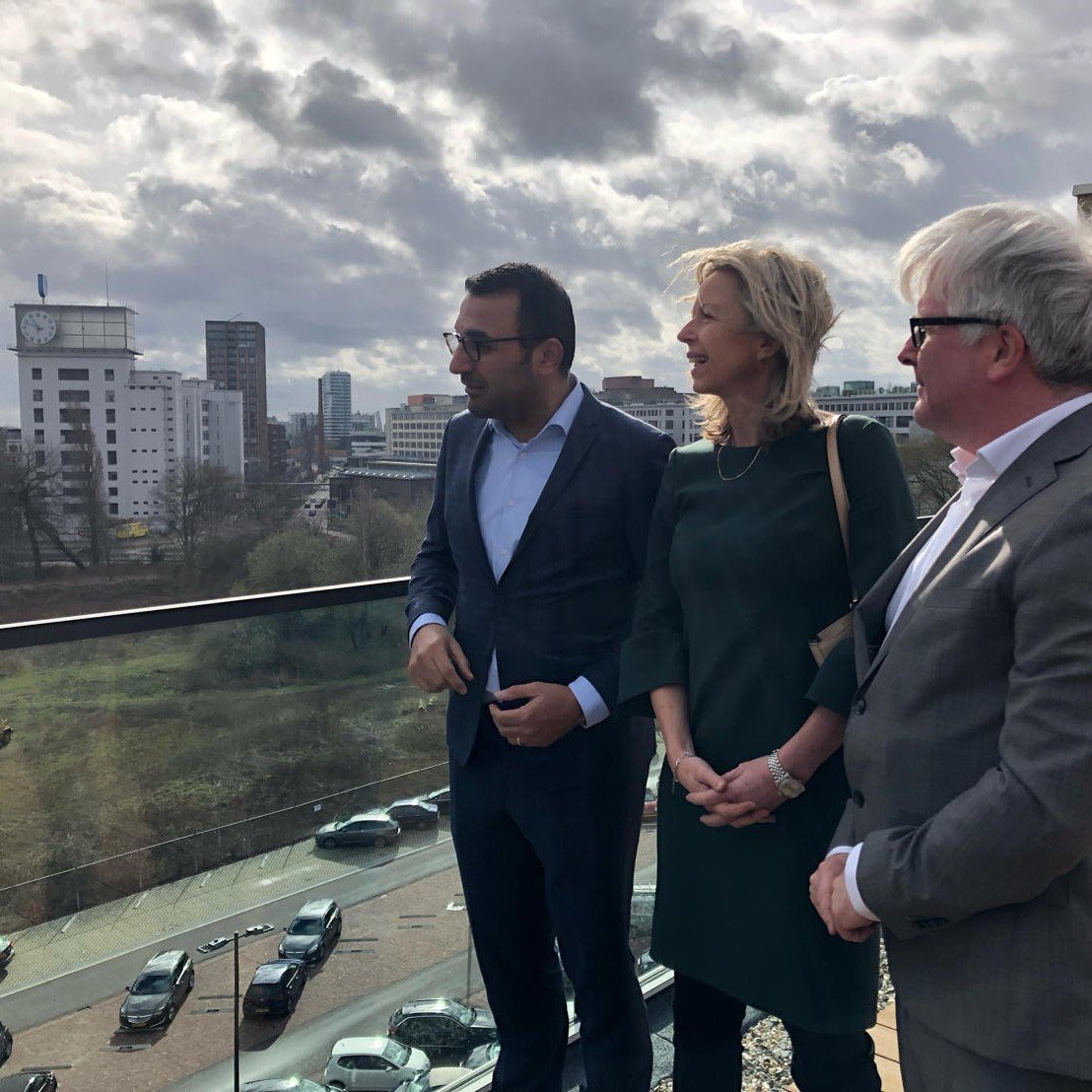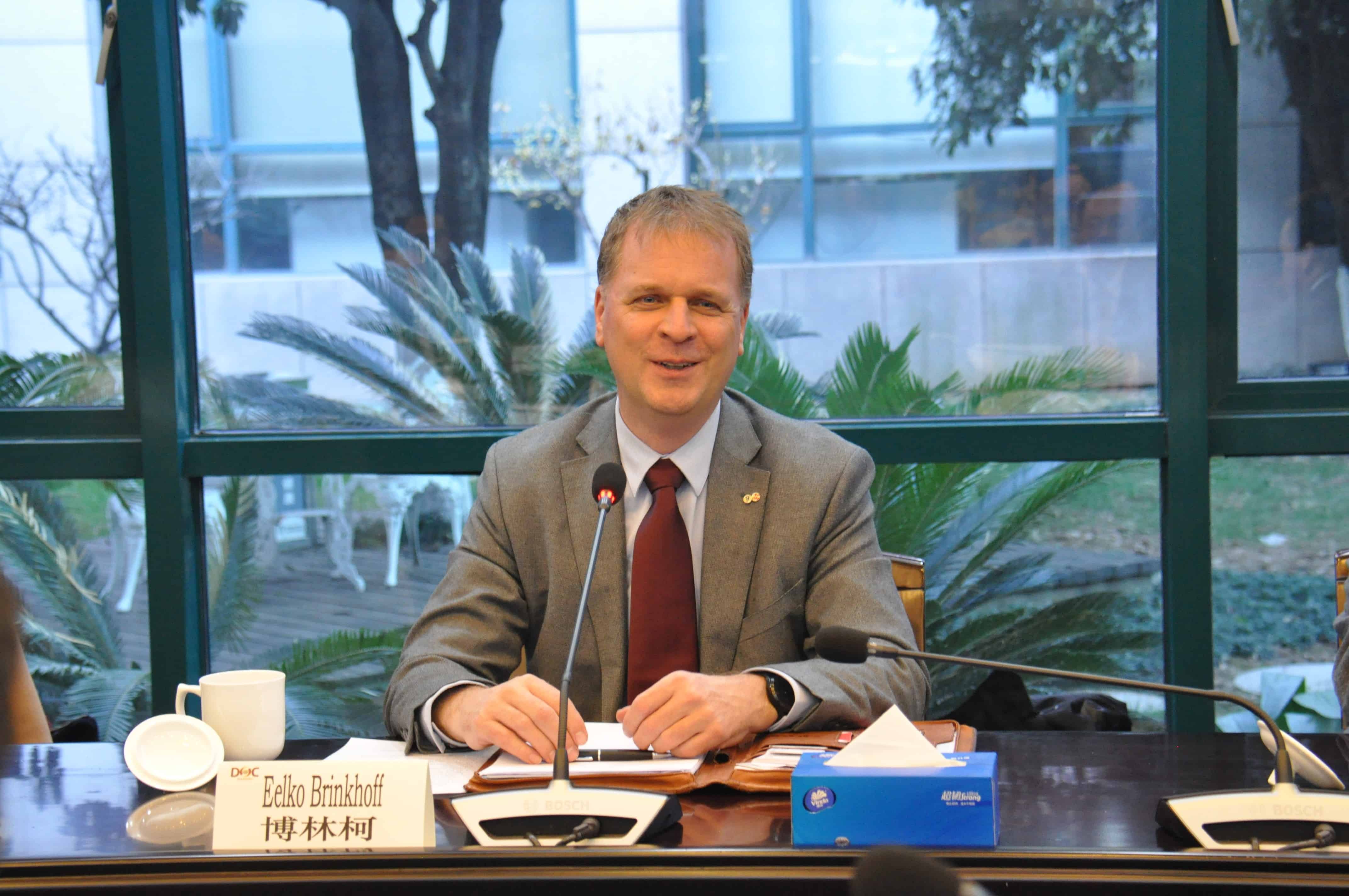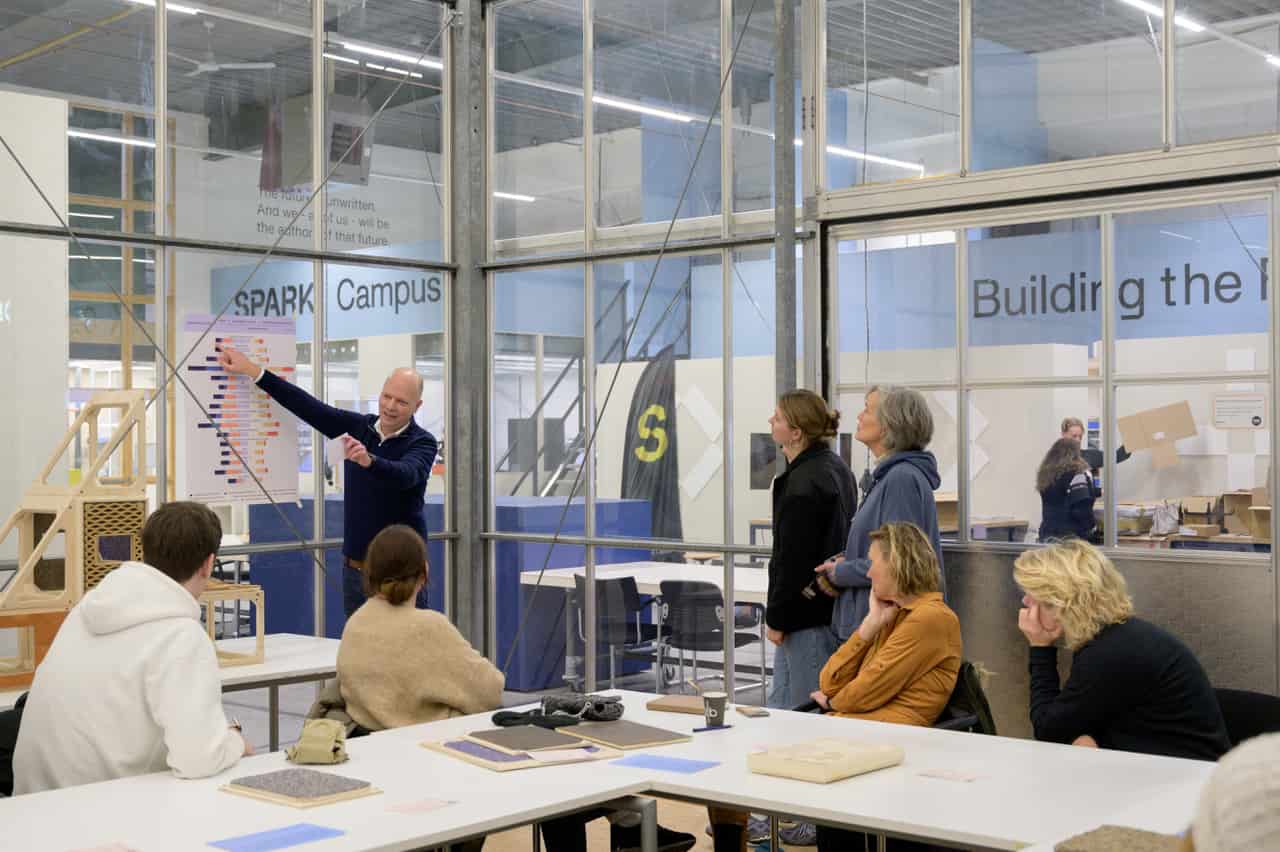
The government, the Eindhoven Urban Area (SGE) and the province of Noord-Brabant have made agreements about speeding up housing construction, the availability of sufficient affordable supply and tackling excesses. The acceleration should result in some 27,000 homes in the period until 2024. In Eindhoven, for example, this means a sharp acceleration of the annual housing production to an average of approximately 3,000 homes per year. There will also be another 1,000 temporary homes in the short term. The government is supporting the housing deal with an amount of 750,000 euros for research and pilots. It is also expected that projects can make use of special rules so that time can be saved.
All this is part of the new “housing deal”, signed on March 7 during a working visit to Strijp-T by Minister Kajsa Ollongren (BZK), alderman Yasin Torunoglu of Eindhoven and Provincial Commissioner Erik van Merrienboer.
Action agenda
The long-term cooperation laid down in the housing deal is in line with the Brainport National Action Agenda. This agenda supports the knowledge-intensive manufacturing industry by jointly investing in new technologies and by improving the business climate of the Brainport region to attract, retain and train talent from home and abroad. An adequate supply of housing is an important condition for this. In addition, there should also be a sufficient supply of affordable housing for lower incomes, students and first-time buyers on the regional housing market.
On a national level, 75,000 new homes need to be built each year in order to make up for the shortages. With the five regions where demand is highest, Minister Ollongren makes administrative agreements for speeding up and tackling excesses. The housing deal with the Eindhoven region is the second in a row after earlier agreements were with Groningen.
Within the SGE, nine preferred locations for housing have already been pointed out. Approximately 15,000 of the 27,000 houses to be built at an accelerated pace will be built in Eindhoven, in particular in the central area and the Knoop XL transformation location near the central railway station. The number of homes that need to be built in Eindhoven at an accelerated pace is the result of the (expected) growth of businesses in the Brainport region, the current housing shortage and the need to respond flexibly to economic and demographic developments.
Flexible Zoning Plans
The government, the province and the municipalities are investigating whether it is possible to speed up the process under existing rules. If possible, the municipality will receive permission from the government to make use of special rules, for example by making zoning plans more flexible. The SGE will receive a national contribution of 100,000 euros for research into housing requirements from 2024 onwards.
In order to alleviate the most acute pressure on the housing market, the realisation of 1,000 temporary homes this year is needed, preferably to be used for more than 10 years. The homes are intended for a broad target group: knowledge workers, labour migrants, students and ‘house-hunters’ who are on the waiting list. Municipalities within the SGE designate locations for the temporary housing and make land available. The province and the minister will accelerate the procedures where necessary.
In the SGE, there is a great deal of demand for rental housing in the middle segment. In the housing deal, it has been agreed that organisations will work on increasing supply and tackling excessive rent increases. The study examines how the whole region can benefit from national measures that the Minister wants to introduce. For example, she is working on an ’emergency button’ that offers municipalities the possibility to limit the initial rents in the free rental sector. Under certain conditions, housing associations will also be given more room to build homes for middle rents. The bill that regulates this is now in the Lower House of Parliament.
Oud-Woensel
The parties will continue to focus on reducing housing nuisance and tackling poor landlordship. For example, SGE will receive 230,000 euros for the development of methods to better reveal housing fraud. In addition, the district of Oud-Woensel will receive a sum of 270,000 euros to tackle subversive activities related to ghost occupancy, vacancy and cottage dairying. In Woensel-Zuid, the neighbourhood renewal is given an impulse by working together on an integrated approach to quality of life in which the improvement and sustainability of the housing stock go hand in hand with an approach in the social field, such as improving safety and tackling educational disadvantages.
The government will make 150,000 euros available for innovative concepts that will further accelerate housing construction and the development of residential areas. This will be done by, for example, building 3D printed houses or further development of the Brainport Smart District, a neighbourhood where new technologies in the fields of transport, sustainability and energy generation are applied. In addition, experiments are starting with the premises of the Karelspoort government office, which will become redundant from 2022 onwards. Rijksvastgoedbedrijf wants to transform these into homes in a sustainable way.







